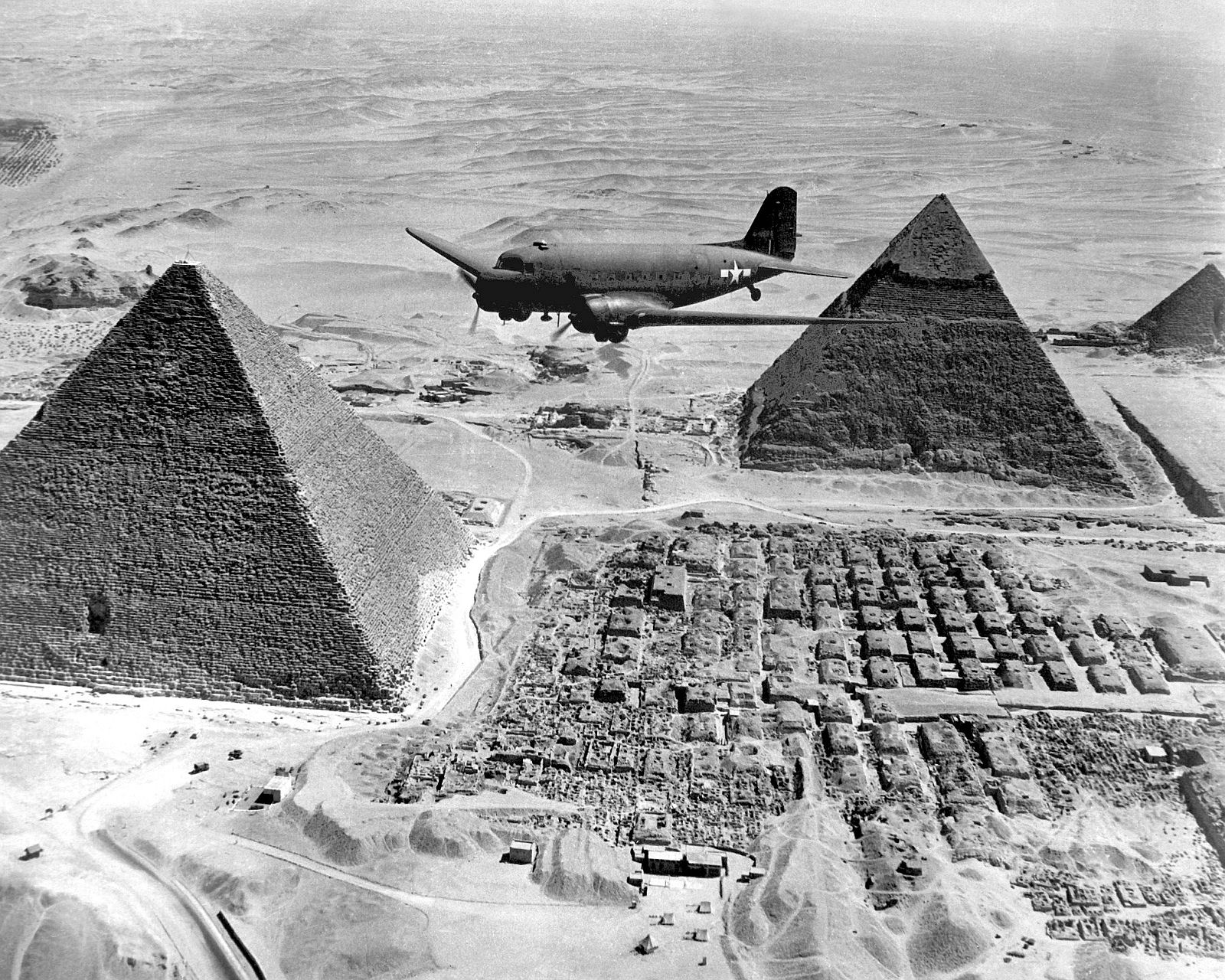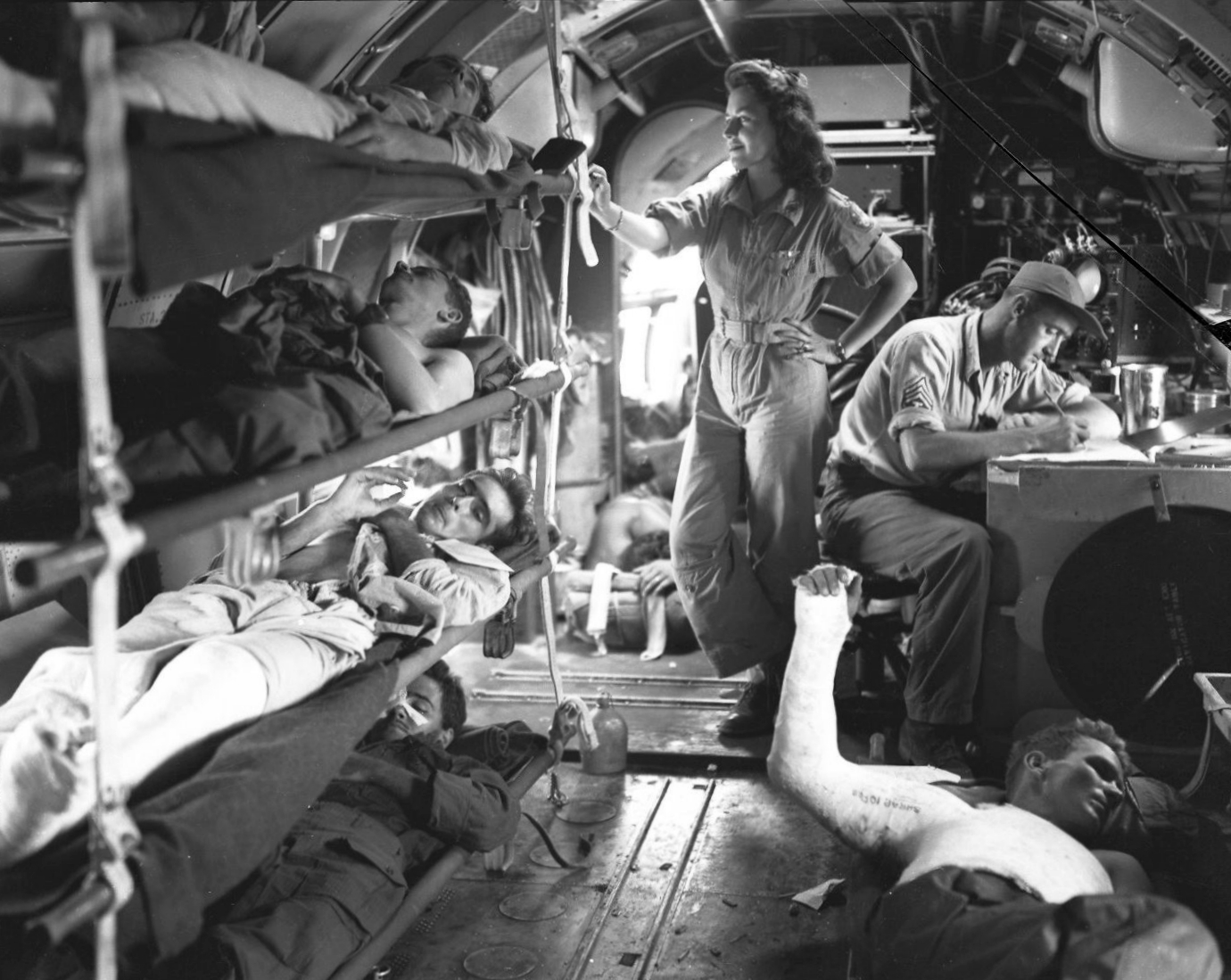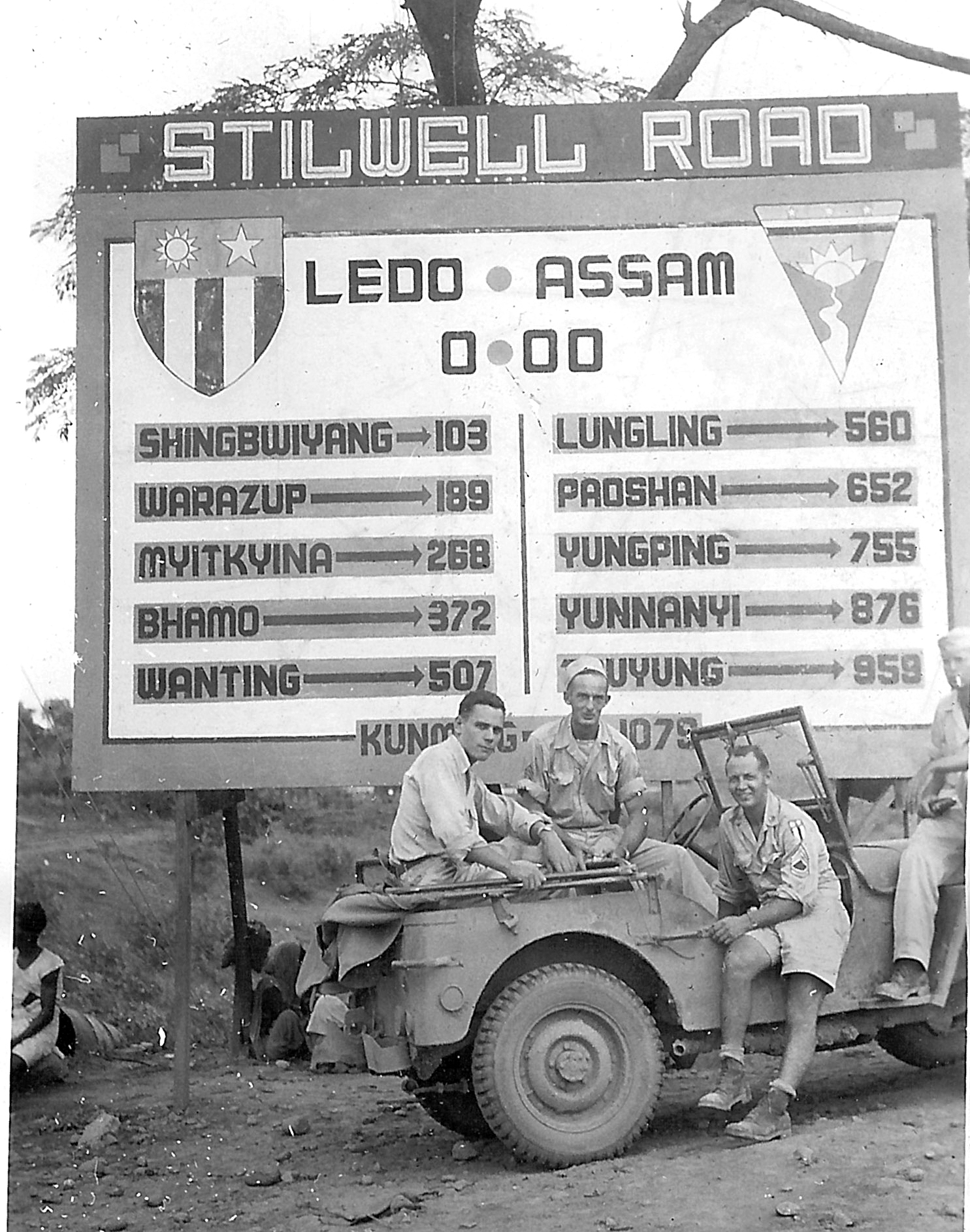|
Ledo Airfield
Ledo Airfield is a former wartime United States Army Air Forces airfield in India used during the Burma Campaign 1944–1945. It is now abandoned, having been destroyed by the 1950 Assam–Tibet earthquake. History The airfield was located at the Railhead for the Ledo Road and was also used as one of the main supply points for "the Hump" transport route to Allied forces in China. It was the home of the C-46 Commandos of the 443rd Troop Carrier Group and the Air Transport Command Air Transport Command (ATC) was a United States Air Force unit that was created during World War II as the strategic airlift component of the United States Army Air Forces. It had two main missions, the first being the delivery of supplies and ... India-China Wing 1st Air Cargo Resupply Squadron. The airfield was used by transport units until the end of January 1946 when it closed. References * Maurer, Maurer. Air Force Combat Units Of World War II. Maxwell Air Force Base, Alabama: Office of Ai ... [...More Info...] [...Related Items...] OR: [Wikipedia] [Google] [Baidu] |
Tenth Air Force
The Tenth Air Force (10 AF) is a unit of the U.S. Air Force, specifically a numbered air force of the Air Force Reserve Command (AFRC). 10 AF is headquartered at Naval Air Station Fort Worth Joint Reserve Base/Carswell Field (formerly Carswell AFB), Texas. The command directs the activities of 14,000 Air Force Reservists and 950 civilians located at 30 military installations throughout the United States. 10 AF is the AFRC numbered air force whose units and aircraft are primarily gained by the Combat Air Forces (CAF), specifically Air Combat Command (ACC), with a smaller number also gained by Air Force Global Strike Command (AFGSC), Pacific Air Forces (PACAF), Air Force Special Operations Command (AFSOC) and Air Education and Training Command (AETC). In addition, Tenth Air Force units fly satellites for Air Force Space Command (AFSPC) in support of the Department of Defense and NOAA. Tenth Air Force was a United States Army Air Forces combat air force created for operations in ... [...More Info...] [...Related Items...] OR: [Wikipedia] [Google] [Baidu] |
China
China, officially the People's Republic of China (PRC), is a country in East Asia. It is the world's most populous country, with a population exceeding 1.4 billion, slightly ahead of India. China spans the equivalent of five time zones and borders fourteen countries by land, the most of any country in the world, tied with Russia. Covering an area of approximately , it is the world's third largest country by total land area. The country consists of 22 provinces, five autonomous regions, four municipalities, and two Special Administrative Regions (Hong Kong and Macau). The national capital is Beijing, and the most populous city and financial center is Shanghai. Modern Chinese trace their origins to a cradle of civilization in the fertile basin of the Yellow River in the North China Plain. The semi-legendary Xia dynasty in the 21st century BCE and the well-attested Shang and Zhou dynasties developed a bureaucratic political system to serve hereditary monarchies, or dyna ... [...More Info...] [...Related Items...] OR: [Wikipedia] [Google] [Baidu] |
Airports In Assam
An airport is an aerodrome with extended facilities, mostly for commercial air transport. Airports usually consists of a landing area, which comprises an aerially accessible open space including at least one operationally active surface such as a runway for a airplane, plane to take off and to land or a helipad, and often includes adjacent utility buildings such as control towers, hangars and airport terminal, terminals, to maintain and monitor aircraft. Larger airports may have airport aprons, taxiway bridges, air traffic control centres, passenger facilities such as restaurants and Airport lounge, lounges, and emergency services. In some countries, the US in particular, airports also typically have one or more fixed-base operators, serving general aviation. Operating airports is extremely complicated, with a complex system of aircraft support services, passenger services, and aircraft control services contained within the operation. Thus airports can be major employers ... [...More Info...] [...Related Items...] OR: [Wikipedia] [Google] [Baidu] |
Defunct Airports In India
{{Disambiguation ...
Defunct (no longer in use or active) may refer to: * ''Defunct'' (video game), 2014 * Zombie process or defunct process, in Unix-like operating systems See also * * :Former entities * End-of-life product * Obsolescence Obsolescence is the state of being which occurs when an object, service, or practice is no longer maintained or required even though it may still be in good working order. It usually happens when something that is more efficient or less risky r ... [...More Info...] [...Related Items...] OR: [Wikipedia] [Google] [Baidu] |
Airfields Of The United States Army Air Forces In British India
An aerodrome (Commonwealth English) or airdrome (American English) is a location from which aircraft flight operations take place, regardless of whether they involve air cargo, passengers, or neither, and regardless of whether it is for public or private use. Aerodromes include small general aviation airfields, large commercial airports, and military air bases. The term ''airport'' may imply a certain stature (having satisfied certain certification criteria or regulatory requirements) that not all aerodromes may have achieved. That means that all airports are aerodromes, but not all aerodromes are airports. Usage of the term "aerodrome" remains more common in Ireland and Commonwealth nations, and is conversely almost unknown in American English, where the term "airport" is applied almost exclusively. A water aerodrome is an area of open water used regularly by seaplanes, floatplanes or amphibious aircraft for landing and taking off. In formal terminology, as defined by the I ... [...More Info...] [...Related Items...] OR: [Wikipedia] [Google] [Baidu] |
Air Transport Command (United States Air Force)
Air Transport Command (ATC) was a United States Air Force unit that was created during World War II as the strategic airlift component of the United States Army Air Forces. It had two main missions, the first being the delivery of supplies and equipment between the United States and the overseas combat theaters; the second was the ferrying of aircraft from the manufacturing plants in the United States to where they were needed for training or for operational use in combat. ATC also operated a worldwide air transportation system for military personnel. Inactivated on 1 June 1948, Air Transport Command was the precursor to what became the Military Air Transport Service in 1948 and was redesignated Military Airlift Command (MAC) in 1966. It was consolidated with MAC in 1982, providing a continuous history of long range airlift through 1992 when the mission was transferred to today's Air Mobility Command. History By no means least among the achievements of the Army Air Forces ... [...More Info...] [...Related Items...] OR: [Wikipedia] [Google] [Baidu] |
443rd Troop Carrier Group
The 443d Airlift Wing is an inactive unit of the United States Air Force. Its last assignment was with Air Mobility Command, being stationed at Altus Air Force Base, Oklahoma. It was inactivated on October 1, 1992. History : ''For additional history and lineage, see 443d Operations Group'' In 1949, the 443d Troop Carrier Wing, Medium was established and trained as a Reserve troop-carrier wing under supervision of the 2596th Air Force Reserve Training Center, June 1949 – April 1951. The 443d was brought to active duty at Donaldson AFB, South Carolina on August 9, 1951, as a training wing by Tactical Air Command. For almost two years, the 443d participated in tactical exercises in operations, training troop-carrier aircrews using C-46 Commandos for assignment to the Far East, and worked closely with other troop-carrier groups to test and evaluate new troop-carrier doctrine and procedures. With the nearing end of the Korean War, the 443d was inactivated on January 8, 1953. In ... [...More Info...] [...Related Items...] OR: [Wikipedia] [Google] [Baidu] |
C-46 Commando
The Curtiss C-46 Commando is a twin-engine transport aircraft derived from the Curtiss CW-20 pressurised high-altitude airliner design. Early press reports used the name "Condor III" but the Commando name was in use by early 1942 in company publicity. It was used as a military transport during World War II by the United States Army Air Forces and also the U.S. Navy/Marine Corps, which called it R5C. The C-46 served in a similar role to its Douglas-built counterpart, the C-47 Skytrain, but it was not as extensively produced as the latter. After World War II, a few surplus C-46 aircraft were briefly used in their original role as passenger airliners but the glut of surplus C-47s dominated the marketplace and the C-46 was soon relegated to cargo duty. The type continued in U.S. Air Force service in a secondary role until 1968. The C-46 continues in operation as a rugged cargo transport for arctic and remote locations with its service life extended into the 21st century. Design and ... [...More Info...] [...Related Items...] OR: [Wikipedia] [Google] [Baidu] |
The Hump
The Hump was the name given by Allied pilots in the Second World War to the eastern end of the Himalayan Mountains over which they flew military transport aircraft from India to China to resupply the Chinese war effort of Chiang Kai-shek and the units of the United States Army Air Forces (USAAF) based in China. Creating an airlift presented the USAAF a considerable challenge in 1942: it had no units trained or equipped for moving cargo, and no airfields existed in the China Burma India Theater (CBI) for basing the large number of transports that would be needed. Flying over the Himalayas was extremely dangerous and made more difficult by a lack of reliable charts, an absence of radio navigation aids, and a dearth of information about the weather. The task was initially given to the USAAF's Tenth Air Force, and then to its Air Transport Command (ATC). Because the USAAF had no previous airlift experience as a basis for planning, it assigned commanders who had been key figures in ... [...More Info...] [...Related Items...] OR: [Wikipedia] [Google] [Baidu] |
Ledo, Assam
Ledo is a small town in Tinsukia district, Assam, India. , the Ledo railway station is the easternmost broad gauge railway station in India. The town is also the starting point of Ledo Road, also known as Stilwell Road, a highway built during World War II for use by American and British troops as a military supply route to China through Myanmar (Burma) The first coal mine in Assam was started near Ledo in 1882 when the erstwhile Assam Railway & Trading Company was laying a metre gauge railway line in that region. Nearest Town and Villages * Tirap Gaon * Lekhapani * Margherita * Tipong Tipong also known as Tipong Colliery, is a small Town in Margherita Tehsil in Tinsukia District of north-eastern state Assam, India. It is located around 4 km away from nearest town Lekhapani, 9 km from away Tirap Gaon and 12 km away from near ... References Cities and towns in Tinsukia district {{Assam-geo-stub ... [...More Info...] [...Related Items...] OR: [Wikipedia] [Google] [Baidu] |
Ledo Road
The Ledo Road (from Ledo, Assam, India to Kunming, Yunnan, China) was an overland connection between India and China, built during World War II to enable the Western Allies to deliver supplies to China and aid the war effort against Japan. After the Japanese cut off the Burma Road in 1942 an alternative was required, hence the construction of the Ledo Road. It was renamed the Stilwell Road, after General Joseph Stilwell of the U.S. Army, in early 1945 at the suggestion of Chiang Kai-shek. It passes through the Burmese towns of Shingbwiyang, Myitkyina and Bhamo in Kachin state. Of the long road, are in Burma and in China with the remainder in India. The road had the Ledo-Pangsau Pass-Tanai (Danai)-Myitkyina--Bhamo-Mansi- Namhkam-Kunming route. To move supplies from the railheads to the Army fronts, three all-weather roads were constructed in record time during the autumn (fall) of 1943: Ledo Road in the north across three nations, which went on to connect to the Burma R ... [...More Info...] [...Related Items...] OR: [Wikipedia] [Google] [Baidu] |
Railhead
In the UK, railheading refers to the practice of travelling further than necessary to reach a rail service, typically by car. The phenomenon is common among commuters seeking a more convenient journey. Reasons for railheading include, but are not limited to, the following: * Discounted fares may be available on another part of the route, but not from their local station - passengers may drive further to benefit from the discount. * Where the local station is served less frequently, passengers may drive to a station with a more frequent service. This is often the case on branch line A branch line is a phrase used in railway terminology to denote a secondary railway line which branches off a more important through route, usually a main line. A very short branch line may be called a spur line. Industrial spur An industri ...s or at stations where most trains pass through rather than stop. References External links * Transport in the United Kingdom {{UK-rail-t ... [...More Info...] [...Related Items...] OR: [Wikipedia] [Google] [Baidu] |






